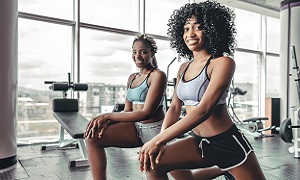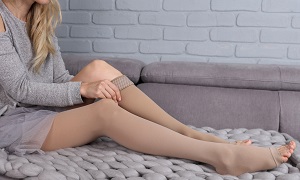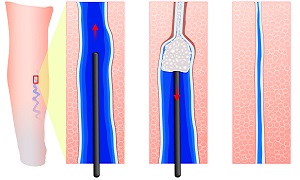Varicose Veins
Varicose veins are twisted and swollen veins that usually develop in the legs and feet; appear just below the surface of the skin. Varicose veins appear as dark purple or bluish in color.
For most people with varicose veins, it could only be a cosmetic concern. However, some patients develop more serious issues like itching, aching, swelling, cramping, discoloration and other discomfort and hence, need medical intervention.
Causes
The veins are an essential part of the blood circulation system in the body. The heart pumps blood into all the tissues in the body through the arteries. The blood is then collected by the veins and sent back to the heart for purification. A minuscule valve in the front of the vein opens and close to prevent the outflow of blood once absorbed from the tissues. Varicose veins develops when the valve in the veins fails to function.
Signs & symptoms of Varicose Veins
- Pain & swelling in the legs & feet.
- Muscle cramping in the lower legs.
- Itching around one or more of the veins
- Skin discoloration around affected veins.
Spider veins & Varicose veins
Varicose and Spider Veins are not the same.
Varicose veins are large, raised, swollen blood vessels that twist and turn. They usually develop in the leg and can be seen through the skin. Spider veins, on the other hand, are smaller, red, purple & blue vessels that also twist and turn. They can appear on legs, chest or face.
Causes & risk factors of Varicose Veins
- Having family history of varicose veins.
- The risk of varicose veins increases with age.
- Obesity
- Sitting & standing for long periods of time.
- Damaged valves can cause varicose veins.
- Excessive pressure on the legs or abdomen
Treatment options for Varicose Veins
Self Care
Before visiting the doctor, you may try if the following self-care methods help.
- Exercise- It can pump blood and open blocked veins or give some relief.
- Lose weight- Pressure of extra weight on legs worsens varicose veins
- Avoid wearing tight clothes
- Elevate legs when sitting.
- Keep changing position when standing or sitting for long periods.
Compression stockings
Who treats Varicose Veins?
Varicose veins are treated by: Vascular surgeons. However, it can also be treated by Dermatologists and Cosmetic Surgeons (for milder versions).
Medical Interventions:
However, if the aforesaid methods don’t ease the pain & discomfort of your varicose veins, then you should see a specialist.
Foam sclerotherapy
Foam sclerotherapy is a minimally invasive technique to eliminate varicose veins. The procedure involves injecting a foam sclerosant in a blood vessel to close it. The blood reroutes itself through healthy veins, restoring more normal blood flow. The varicose vein gradually fades away in some time. The procedure doesn’t require anesthesia and can be done at doctor’s office/cabin.
Endovenous laser therapy
Endovenous laser treatment is a non-invasive ultrasound-guided technique used for treating varicose veins using laser energy. In laser treatment, strong bursts of light are sent to the varicose veins, which makes the varicose veins slowly fade and disappear. The procedure doesn’t involve any needle or incision and is painless.
Radiofrequency Ablation
Radiofrequency Ablation (RFA) is a minimally invasive treatment method for treating varicose veins. In RFA, radiofrequency energy is passed through a catheter inside the vein. The heart of radiofrequency energy heats and destroys the wall of the vein and closes the vein. The procedure is done with mild sedative or local anesthesia. You will be recommended to wear compression stockings for about a week after RFA. Radiofrequency Ablation is generally more preferred method of treatment in case of large veins.
Surgery
Surgical approaches to treating Varicose Veins include:
High ligation and vein stripping
In High ligation and vein stripping, a vein is tied off before it joins the deep vein and the vein is removed through small incisions. Removing the vein wont hamper blood circulation as veins deeper would take care of blood. It is done on OPD basis and doesn’t normally require hospitalization.
Ambulatory phlebectomty
In ambulatory phlebectomty, the vascular surgeon removes varicose veins through small incisions in the leg.
Endoscopic Vein Surgery
Endoscopic vein surgery is generally done in advanced cases where other methods didn’t work or in cases of leg ulcers. In this method, an endoscope(a camera mounted surgical device) is inserted to remove the veins through small incisions. Like other procedures, this procedure too, is normally done o0n OPD basis.




